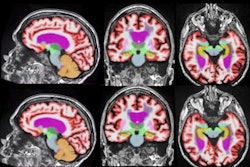Dear AuntMinnie Member,
Are radiologists going too far, too fast when it comes to the use of artificial intelligence (AI) for interpreting medical images?
That seems to be the implication of an advisory issued April 11 by the U.S. Food and Drug Administration (FDA). The FDA sent the advisory to healthcare providers, notifying them that radiologists still need to review cases of large-vessel occlusion (LVO) that have been triaged by AI software.
Use of AI software for analyzing signs of LVO on medical images has grown following the creation of a Medicare program to pay for the algorithms. But these models are only designed to triage urgent cases; radiologists still must interpret images that are given lower priority by AI software, according to the FDA.
Learn more in our Artificial Intelligence Community.
Costs of breast MRI
MRI is an incredibly powerful modality, and one of its most exciting applications is in breast imaging. But is too much of a good thing still too much?
Researchers from Harvard Medical School analyzed the use of breast MRI in women who did not have a previous diagnosis of breast cancer, finding that it led to more follow-up tests and higher costs compared with conventional mammography.
In other MRI news, researchers from Rush University Medical Center correlated evidence of white-matter hyperintensities on MRI scans with memory complaints experienced by individuals, and they found that both were connected to a higher risk of cognitive decline.
Finally, learn how an ultralow-field MRI scanner in a cargo van can provide access to MRI to people in areas who previously did not have had access to it.
These stories and more are available in our MRI Community.
Handling disruptive radiologists
Finally, visit our Imaging Leaders Community for a couple of intriguing new articles, one on how to handle disruptive radiologists, and the second on a new survey on salaries in radiology -- there is good news and bad news.


















